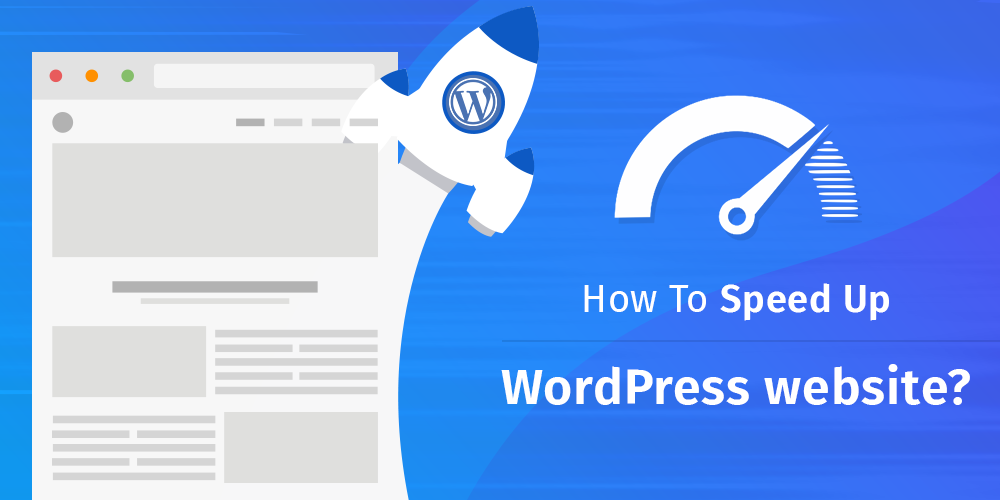A slow WordPress site not only frustrates your visitors but can also harm your search engine rankings. Google and other search engines take page speed into account when ranking sites, and a slow website can lead to higher bounce rates. Fortunately, there are several strategies and tools you can use to improve your WordPress site’s speed.
In this article, we’ll cover best practices and tools to help speed up your WordPress site and enhance user experience.
1. Use a Lightweight Theme
The theme you choose for your WordPress site plays a significant role in its speed. A bloated theme with lots of unnecessary features can slow down your site.
How to choose a lightweight theme:
- Opt for themes designed with performance in mind. Many modern themes are well-optimized and include minimal code.
- Look for themes labeled as “performance optimized” or “SEO-friendly.”
- Popular lightweight themes include GeneratePress, Astra, and Neve, all of which are known for their fast performance.
Why it matters:
Themes with too many features (like heavy sliders, animations, or excessive widgets) add unnecessary code and slow down your site. A lightweight theme, by contrast, minimizes the number of resources needed to load, giving your site a speed boost.
2. Enable Caching
Caching plays a crucial role in speeding up your WordPress site by storing static files (like images, HTML, and CSS) and serving them to visitors rather than generating these files every time a page is requested.
How to enable caching:
- Use a caching plugin: Popular caching plugins like W3 Total Cache or WP Super Cache can dramatically improve the speed of your WordPress site by creating static HTML files of your pages.
- Object caching: This stores the results of database queries to avoid repeated queries, improving performance for dynamic sites.
- Browser caching: Caching files in a visitor’s browser means that they don’t need to be reloaded each time they visit your site.
Why it matters:
Caching reduces the load on your server and decreases the time it takes to load each page, especially for returning visitors.
3. Optimize Your Images
Images are one of the most common causes of slow website loading times. Large image files can significantly slow down your site, especially if your pages contain multiple high-resolution images.
How to optimize images:
- Resize images: Before uploading an image, make sure it’s the right size. Avoid uploading oversized images.
- Use image optimization plugins: Plugins like Smush or ShortPixel automatically compress images without compromising quality.
- Use the WebP format: WebP is a modern image format that offers better compression, reducing image size without sacrificing quality.
Why it matters:
Reducing image file sizes ensures your pages load faster, which improves both the user experience and your search engine ranking.
4. Minify CSS, JavaScript, and HTML
Minification is the process of removing unnecessary characters (such as spaces, comments, and line breaks) from CSS, JavaScript, and HTML files. This reduces the file size and speeds up the loading time.
How to minify your site’s code:
- Use a minification plugin: Plugins like Autoptimize or W3 Total Cache can automatically minify CSS, JavaScript, and HTML files.
- Manual minification: You can manually minify code using online tools like CSS Minifier or JSCompress, but using plugins is more efficient.
Why it matters:
Minified files are smaller and require less bandwidth, leading to faster loading times.
5. Use a Content Delivery Network (CDN)
A CDN is a network of servers that stores copies of your site’s static files and delivers them from the server closest to the user’s location. This reduces latency and speeds up loading times for visitors worldwide.
How to set up a CDN:
- Choose a CDN provider: Some popular options are Cloudflare, KeyCDN, and StackPath.
- Install a CDN plugin: Once you’ve signed up with a CDN provider, install their plugin (or use the built-in integration with caching plugins) to connect your site to the CDN.
Why it matters:
Using a CDN allows your website’s content to be served from multiple locations around the world, reducing load times and improving performance for international visitors.
6. Choose a High-Quality Hosting Provider
The hosting environment plays a critical role in your WordPress site’s performance. Shared hosting may be budget-friendly, but it can also lead to slower load times, especially if other websites on the same server are consuming too many resources.
How to choose a hosting provider:
- Use managed WordPress hosting: Services like Kinsta, WP Engine, or SiteGround offer optimized WordPress hosting with better performance and faster load times.
- Use VPS or dedicated hosting: For high-traffic sites, consider upgrading to a Virtual Private Server (VPS) or dedicated hosting to gain more control over your server resources.
Why it matters:
A high-quality host ensures that your site’s server is fast, secure, and stable, which directly affects your site’s loading speed.
7. Limit the Use of External Scripts
External scripts such as font loaders, third-party widgets, or social media feeds can increase the number of HTTP requests and slow down your site.
How to limit external scripts:
- Use asynchronous loading: Load external scripts asynchronously so they don’t block the rendering of the page.
- Remove unnecessary scripts: Evaluate the scripts your site uses and remove any that are not essential to your site’s functionality.
Why it matters:
Fewer external scripts mean fewer HTTP requests, leading to faster page load times.
8. Regularly Update WordPress, Themes, and Plugins
Outdated software can result in slower performance and security vulnerabilities. Keeping your WordPress core, themes, and plugins up to date ensures your site remains secure and optimized.
How to keep your site updated:
- Enable auto-updates: WordPress allows you to enable automatic updates for minor releases, which can be done directly in the WordPress admin.
- Manually update themes and plugins: Check for updates in the WordPress dashboard and update regularly.
Why it matters:
Updates often contain performance improvements and bug fixes that can boost your site’s speed and security.
Conclusion
A fast WordPress site is crucial for providing a great user experience and improving your site’s SEO. By implementing the best practices and using the right tools, you can ensure that your WordPress site loads quickly, even under heavy traffic. Here’s a quick recap of the tips we covered:
- Choose a lightweight theme.
- Enable caching.
- Optimize images.
- Minify your code.
- Use a Content Delivery Network (CDN).
- Choose a quality hosting provider.
- Limit external scripts.
- Keep everything updated.
By applying these strategies, you’ll be able to significantly improve your site’s speed, enhance user satisfaction, and rank higher in search results.

